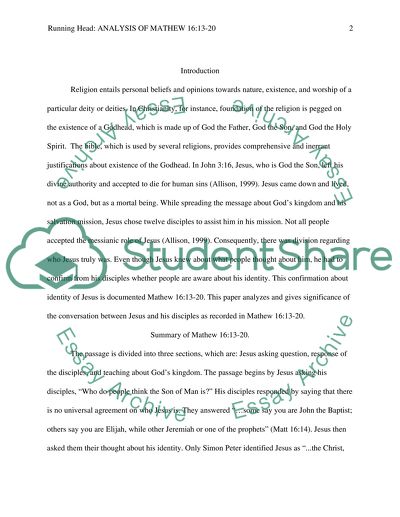Cite this document
(“Gospels/Good News (Analysis of Mathew 16:13-20) Essay”, n.d.)
Gospels/Good News (Analysis of Mathew 16:13-20) Essay. Retrieved from https://studentshare.org/religion-and-theology/1454560-gospels-good-news-response-paper
Gospels/Good News (Analysis of Mathew 16:13-20) Essay. Retrieved from https://studentshare.org/religion-and-theology/1454560-gospels-good-news-response-paper
(Gospels/Good News (Analysis of Mathew 16:13-20) Essay)
Gospels/Good News (Analysis of Mathew 16:13-20) Essay. https://studentshare.org/religion-and-theology/1454560-gospels-good-news-response-paper.
Gospels/Good News (Analysis of Mathew 16:13-20) Essay. https://studentshare.org/religion-and-theology/1454560-gospels-good-news-response-paper.
“Gospels/Good News (Analysis of Mathew 16:13-20) Essay”, n.d. https://studentshare.org/religion-and-theology/1454560-gospels-good-news-response-paper.


